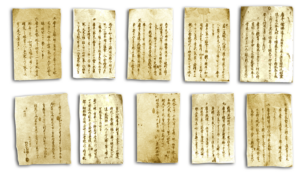Unveiling Anko Itosu’s Insights in Karate.

Within the realm of martial arts, Anko Itosu’s legacy remains profound, as evidenced by his “Ten Precepts of Karate.” This article takes a closer look at one pivotal phrase extracted from this esteemed work – the ninth precept. This passage not only holds a key to Itosu’s philosophy but also offers a window into his understanding of training, health, and the essence of martial arts.
Quotation and Context.
The ninth precept reads as follows:
“When practising Karate, do not put too much force or stress on your body; control your resources of strength. If not, your face and eyes will turn red. Such training methods are dangerous to your health; therefore, that form of practice should be avoided.”
Examining this statement in detail, I aim to unveil the profound wisdom enshrined within and its continued relevance.
Analyzing Anko Itosu’s “ninth precept” from Ten Precepts of Karate.
Anko Itosu’s sentence from his “Ten Precepts of Karate” encapsulates his deep understanding of the relationship between physical training, health preservation, and effective martial arts practice. This analysis delves into the key components of the sentence and their implications.
1. “When practicing Karate, do not put too much force or stress on your body; control your resources of strength.”
This portion of the sentence underscores Itosu’s emphasis on balance and control. It reflects his belief that excessive force and stress during Karate practice can lead to negative consequences. The phrase “control your resources of strength” suggests that Itosu recognized the importance of pacing oneself during training. It’s an early indication of his understanding that measured and controlled training could lead to better long-term progress.
2. “If not, your face and eyes will turn red.”
Here, Itosu links the physical manifestation of redness in the face and eyes to the excessive exertion he warned against. This connection implies that visible signs of strain are a result of overexertion and potentially harmful training methods. The redness serves as a visible marker of the body’s physiological response to stress and a clear sign that one’s training has gone beyond a healthy threshold.
3. “Such training methods are dangerous to your health; therefore, that form of practice should be avoided.”
In this final part of the sentence, Itosu directly highlights the potential danger associated with these training methods. He draws a direct line between overexertion, the resultant physical signs (redness), and health risks. The phrase “that form of practice should be avoided” serves as a stern warning against using such methods in training. Itosu’s concern for his students’ well-being is evident, as he prioritizes their health and safety over immediate gains in training intensity.
Implications and Significance.

Ten Precepts of Karate
Itosu’s sentence showcases his comprehensive approach to martial arts training. He understood that effective Karate practice extends beyond physical prowess to encompass mental and physical well-being.
Itosu’s recognition of visible physiological indicators (redness of the face and eyes) as warning signs of excessive training stress reflects a rudimentary understanding of how the body responds to stress, a concept that modern sports science has since confirmed.
Itosu’s advice aligns with the contemporary understanding of overtraining and its detrimental effects. By emphasizing moderation and control, he effectively warned against practices that could lead to burnout, injuries, and compromised health.
Itosu’s approach suggests a focus on sustainable, gradual progress rather than immediate and unsustainable gains. This mirrors modern principles of periodization and progressive overload in training methodologies.
Itosu’s concern for his students’ health highlights his role as a responsible and caring instructor. His emphasis on responsible training practices contributes to his legacy as a martial arts pioneer who valued the well-being of his students.
Moreover, Itosu’s early awareness of physiological responses to training stress aligns with modern sports science, validating his insights as a foundational understanding of the body’s limits.
Conclusion.
Anko Itosu’s sentence from his “Ten Precepts of Karate” goes beyond its historical context, offering insights that resonate with modern understanding of sports science and responsible training practices. His warnings against excessive force and stress, coupled with his recognition of visible physiological indicators, reveal a thoughtful approach to martial arts instruction that prioritizes the long-term health and well-being of practitioners. This sentence stands as a testament to Itosu’s wisdom and his contribution to shaping Karate not only as a martial art but also as a disciplined and comprehensive way of life.
Thanks for reading.
Gert
